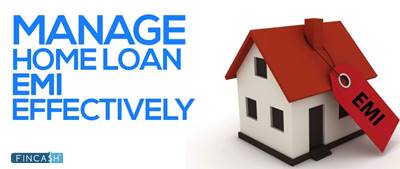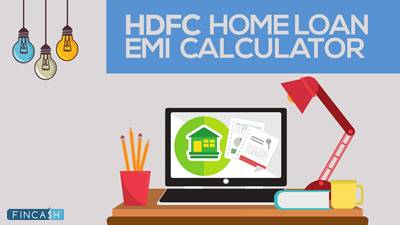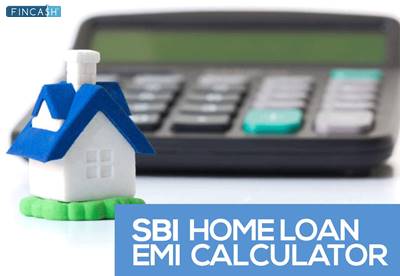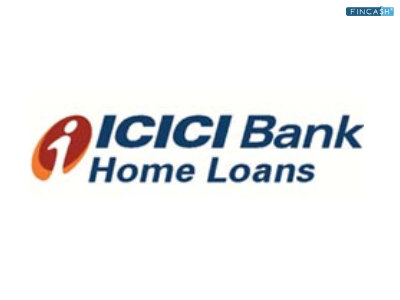
Table of Contents
Effortlessly Manage your Home Loan EMIs by Following a Few Steps!
Getting a dream house is what we all look up to. Home Loans are the key to the door opening to a dwelling, we can Call “Home”. However, Home Loan EMIs need to be managed in a way that offers optimal benefits to the loan bearer.
Easy Tips to Manage Home Loan EMIs
These are the ways one can manage home loan EMIs effectively:
1. Manage your Finance
Repaying the home loan is a big responsibility on the loan bearer. Paying EMIs regularly is extremely important. Therefore you need to thoroughly learn money management. To start with the process, make a list of the investments or monthly payable bills like EPF, PPF, postal deposits etc. Keep a track of where the money is going. Investments with unnecessary interests need to be closed so that there is no shortage of money while paying the home loan emi, as an assurance of a shelter is of utmost importance especially for families with kids and elderly members.

Also, redefining monthly Income is necessary to manage home loan EMIs in a better way. Ideally, one should opt for an EMI amount below 50% of the monthly income. For example, if your monthly income is INR 60,000, your monthly EMI should not be above INR 30,000.
2. Look for suitable Home Loan Interest Rate
Every individual has a different choice, priority, perception and financial condition. For people who don’t want to pay a certain amount (EMI) for a very long-term and want to close it as soon as possible to reduce the monthly burden, they can opt for a higher EMI rate. This will reduce the loan tenure and allow the loan bearer to soon focus on other investments like Retirement planning etc.
On the other hand, interest rates can be lowered for people who cannot afford to pay that big an amount every month but don’t mind repaying the loan within a longer period. For the latter, the ideal way is to transfer the home loan balance to a Bank that offers a comparatively lower home loan interest rate. This will lower the monthly EMI and allow the loan bearers to manage their funds efficiently without causing a shortage of money by the month-end. But, while using this Balance Transfer Facility, one needs to mandatorily consider a lender with Marginal Cost of Funds based Lending Rate (MCLR). This will enable you to leverage the lower repo rates.
Talk to our investment specialist
Top Home Loan Interest Rates 2024
The lowest interest rate of home loan interest starts from 7.35% p.a., and it goes up to 19% p.a, but it differs from bank to bank.
Get the complete list of the housing loan interest rate in India from all banks and financial institutions.
| Banks/ Institutions | Interest Rates | Processing Fees |
|---|---|---|
| State Bank of India | 7.35% - 7.75% p.a | Rs. 2000- Rs. 10,000 |
| HDFC Ltd | 7.85% -8.25% p.a | Up to 0.50% |
| Union Bank of India | 7.30% - 7.55% p.a | Up to 0.50%(mac Rs. 15000) +GST |
| ICICI Bank | 8.60% - 9.40% p.a | 0.50% to 1% |
| Axis Bank | 8.55% - 9.40% | Up to 1% |
| Bank of Baroda | 7.25% - 8.25% p.a. | 0.25% to 0.50% |
| PNB Housing Loan | 8.95%- 9.95% p.a. | Up to 0.25% (max. Rs. 15,000) + GST |
| LIC Housing Finance Ltd | 8.40% - 8.50% p.a. | Rs. 10,000- Rs.15,000 (+Service Tax) |
| Karnataka Bank | 8.65% - 10.25% p.a. | 0.50% to 2.00% |
| United Bank of India | 8.00%- 8.15% p.a. | Rs.1000/ or Above |
| Vijaya Bank | 8.10% - 9.10% p.a. | 0.50 % or Max Rs. 20,000/- |
| Standard Chartered Bank | 9.26% p.a. onwards | Up to 1.00% |
| UCO Bank | 8.05% to 8.60% p.a. | 0.50% |
| Citi Bank | 8.05% - 9.60% p.a. | Rs.10,000 |
| HSBC Bank | 8.55% - 8.65% p.a. | Rs.10,000 or 1% of Loan Amount |
| Bandhan Bank | 8.75% - 14.50% p.a. | 1% of Loan Amount |
| Oriental Bank | 8.25% - 8.80% p.a. | 0.50% of the Loan Amount |
| Sundaram Home Finance Ltd | 8.55% - 9.25% p.a. | 0.50% - 1% (min. Rs.2,000; max. Rs.20,000) |
| Kotak Mahindra Bank | 8.60% - 9.40% p.a. | Up to Rs.10,000 |
| DBS Bank | 8.45% - 8.95% p.a. | Up to Rs.10,000 |
| Aditya Birla Capital Housing Finance | 9.00% – 12.50% p.a. | Up to 1% on the loan amount |
| Indiabulls Housing Finance | 8.99% p.a. | Max. 1% on loan |
| IDFC First Bank | 8.00% – 14.00% p.a. | Rs. 10,000 |
| Canara Bank | 8.05% - 10.05% p.a. | 0.50% (Max. Rs.10,000) |
| Federal Bank | 8.55% - 8.70% p.a. | 0.5% (Max Rs 7500) |
| Andhra Bank | 8.15% - 9.20% p.a. | 0.50% (max. Rs.10,000) |
| Dhanlakshmi Bank | 9.55% - 10.25% p.a. | 1% |
| Bank of India | 8.00% - 8.30% p.a. | 0.25% (Max. Rs.20,000) |
| Bank of Maharashtra | 8.55% – 9.00% p.a. | 0.25% |
| IDBI Bank | 8.25% - 8.80% p.a. | 0.50% |
| Indian Overseas Bank | 8.20% - 10.95% p.a. | 0.50% |
| Karur Vysya Bank | 8.65% - 12.50% p.a. | Rs.2,500 - Rs.7,500 |
| South Indian Bank | 9.00% p.a. onwards | 0.50% (Max. Rs.10,000) |
| Tamilnad Mercantile Bank | 9.10% p.a. | 2% or Rs.15,000/- |
| Central Bank of India | 8.00% - 8.55% p.a. | 1% (or Min. Rs.10,000) |
| Tata Capital | 9.25% p.a. | 2% |
| Yes Bank | 9.78% - 10.68% p.a. | Up to 2% |
| Jammu and Kashmir Bank | 8.65% - 8.95% p.a. | 2%-3% |
| Avas Financiers | 10% - 19% p.a. | Up to 2% plus GST |
| Indian Shelter Finance Corporation | 16% p.a. | Up to 3% |
| DHFL Housing Finance | 9.75% p.a. onwards | Rs 2500/- (+ GST+ document charges) |
3. Use a Housing Loan EMI Calculator
The EMI (Equated Monthly Instalments) amount comprises a portion of the principal and interest amount. Therefore, it is advisable to calculate the EMI amount at the initial stage of the loan application. It is important to have an idea about the monthly EMI amount using a home loan emi calculator, which is an excellent and effective financial tool to manage your EMIs without having to miss out on a payment.
The Amortization Table, in the home loan EMI calculator, helps one to get an idea about the interest amount and principal outstanding balance at different points in the tenure.
Personal Loan Interest:₹311,670.87 Interest per annum:14% Total Personal Payment: ₹1,311,670.87 Personal Loan Amortization Schedule (Monthly)Personal Loan EMI Calculator
Month No. EMI Principal Interest Cumulative Interest Pending Amount 1 ₹27,326.48 ₹15,659.81 1,400% ₹11,666.67 ₹984,340.19 2 ₹27,326.48 ₹15,842.51 1,400% ₹23,150.64 ₹968,497.68 3 ₹27,326.48 ₹16,027.34 1,400% ₹34,449.78 ₹952,470.35 4 ₹27,326.48 ₹16,214.32 1,400% ₹45,561.93 ₹936,256.02 5 ₹27,326.48 ₹16,403.49 1,400% ₹56,484.92 ₹919,852.53 6 ₹27,326.48 ₹16,594.86 1,400% ₹67,216.53 ₹903,257.67 7 ₹27,326.48 ₹16,788.47 1,400% ₹77,754.54 ₹886,469.2 8 ₹27,326.48 ₹16,984.34 1,400% ₹88,096.68 ₹869,484.86 9 ₹27,326.48 ₹17,182.49 1,400% ₹98,240.67 ₹852,302.38 10 ₹27,326.48 ₹17,382.95 1,400% ₹108,184.19 ₹834,919.43 11 ₹27,326.48 ₹17,585.75 1,400% ₹117,924.92 ₹817,333.68 12 ₹27,326.48 ₹17,790.92 1,400% ₹127,460.48 ₹799,542.76 13 ₹27,326.48 ₹17,998.48 1,400% ₹136,788.48 ₹781,544.28 14 ₹27,326.48 ₹18,208.46 1,400% ₹145,906.5 ₹763,335.82 15 ₹27,326.48 ₹18,420.89 1,400% ₹154,812.08 ₹744,914.93 16 ₹27,326.48 ₹18,635.8 1,400% ₹163,502.75 ₹726,279.13 17 ₹27,326.48 ₹18,853.22 1,400% ₹171,976.01 ₹707,425.91 18 ₹27,326.48 ₹19,073.17 1,400% ₹180,229.31 ₹688,352.74 19 ₹27,326.48 ₹19,295.69 1,400% ₹188,260.1 ₹669,057.04 20 ₹27,326.48 ₹19,520.81 1,400% ₹196,065.76 ₹649,536.23 21 ₹27,326.48 ₹19,748.55 1,400% ₹203,643.68 ₹629,787.68 22 ₹27,326.48 ₹19,978.95 1,400% ₹210,991.21 ₹609,808.72 23 ₹27,326.48 ₹20,212.04 1,400% ₹218,105.64 ₹589,596.68 24 ₹27,326.48 ₹20,447.85 1,400% ₹224,984.27 ₹569,148.83 25 ₹27,326.48 ₹20,686.41 1,400% ₹231,624.34 ₹548,462.43 26 ₹27,326.48 ₹20,927.75 1,400% ₹238,023.07 ₹527,534.68 27 ₹27,326.48 ₹21,171.91 1,400% ₹244,177.64 ₹506,362.77 28 ₹27,326.48 ₹21,418.91 1,400% ₹250,085.2 ₹484,943.86 29 ₹27,326.48 ₹21,668.8 1,400% ₹255,742.88 ₹463,275.06 30 ₹27,326.48 ₹21,921.6 1,400% ₹261,147.76 ₹441,353.46 31 ₹27,326.48 ₹22,177.35 1,400% ₹266,296.88 ₹419,176.11 32 ₹27,326.48 ₹22,436.09 1,400% ₹271,187.27 ₹396,740.02 33 ₹27,326.48 ₹22,697.84 1,400% ₹275,815.9 ₹374,042.18 34 ₹27,326.48 ₹22,962.65 1,400% ₹280,179.73 ₹351,079.53 35 ₹27,326.48 ₹23,230.55 1,400% ₹284,275.66 ₹327,848.98 36 ₹27,326.48 ₹23,501.57 1,400% ₹288,100.56 ₹304,347.41 37 ₹27,326.48 ₹23,775.76 1,400% ₹291,651.28 ₹280,571.65 38 ₹27,326.48 ₹24,053.14 1,400% ₹294,924.62 ₹256,518.51 39 ₹27,326.48 ₹24,333.76 1,400% ₹297,917.33 ₹232,184.75 40 ₹27,326.48 ₹24,617.65 1,400% ₹300,626.16 ₹207,567.1 41 ₹27,326.48 ₹24,904.86 1,400% ₹303,047.77 ₹182,662.24 42 ₹27,326.48 ₹25,195.42 1,400% ₹305,178.83 ₹157,466.82 43 ₹27,326.48 ₹25,489.36 1,400% ₹307,015.94 ₹131,977.45 44 ₹27,326.48 ₹25,786.74 1,400% ₹308,555.68 ₹106,190.71 45 ₹27,326.48 ₹26,087.58 1,400% ₹309,794.57 ₹80,103.13 46 ₹27,326.48 ₹26,391.94 1,400% ₹310,729.11 ₹53,711.19 47 ₹27,326.48 ₹26,699.85 1,400% ₹311,355.74 ₹27,011.34 48 ₹27,326.48 ₹27,011.34 1,400% ₹311,670.87 ₹0
4. Consider Making a Partial Prepayment
Partial pre-payments can be done to lower the burden of paying a fixed monthly amount. This facility is provided to the borrowers through which they can use any of the one-time incomes like matured FDs etc to repay a certain loan amount at any point within the tenure. This will lower the principal loan amount.
As the principal outstanding amount is generally higher during the initial years, it is beneficial to make part pre-payments in those years. However, one needs to enquire about the pre-payment charges, which are mostly minimal, while applying for the loan.
Home Loan Eligibility
To get a home loan sanctioned, the borrower needs to meet certain eligibility criteria to ensure the lender that he/she can easily repay the amount without defaulting. The eligibility is calculated by taking into consideration the age, Credit Score, total work experience, net monthly salary, existing obligations or ongoing EMIs and extra monthly income of the home loan applicant. Today, aspiring homeowners and potential borrowers can use an online home loan eligibility calculator.
Steps to using a Home Loan Eligibility Calculator
- Enter date of birth and currently residing city in the calculator.
- Set a value for certain parameters like net monthly salary, loan repayment tenure, another source of monthly income, EMIs of any existing loans, on the home loan eligibility calculator.
- After getting the result, you can now opt for a lender that can provide home loans at attractive terms with EMIs spread over your desired tenure.
How to Avoid Factors that Affect Home Loan Eligibility?
Applicants with a CIBIL Score above 750 have higher chances of getting their loan application sanctioned with reasonable terms and scope of a comfortable repayment. Therefore, it is very important for an individual to improve his/her CIBIL score if planning to apply for a home loan. Lending institutions often provide loans at attractive interest rates to borrowers with a CIBIL score above 750.
Lenders offer home loans at favourable terms only when the borrower is able to maintain a low Fixed Obligations to Income Ratio(FOIR), as it indicates a higher disposable income with which the borrower can easily make monthly EMI payments without defaulting. Hence, one should make regular payments of the existing obligations and try to clear as many existing loans as possible, before applying for a home loan.
The eligibility of a borrower improves if he/she applies for a home loan jointly with an earning co-applicant or spouse.
All efforts have been made to ensure the information provided here is accurate. However, no guarantees are made regarding correctness of data. Please verify with scheme information document before making any investment.











